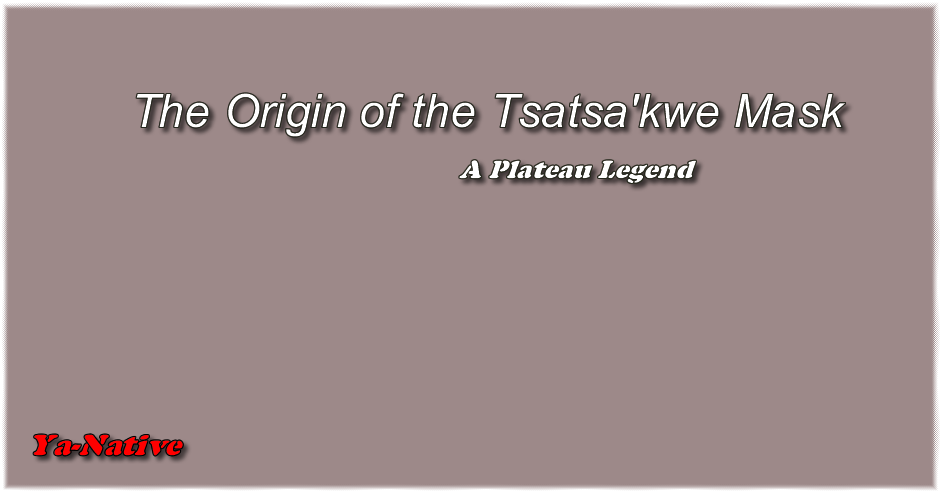
A girl lived in the S'a'tcinko country near Yale.5 She was so disobedient that her parents could do nothing with her. At last they beat her soundly, poured urine on her face, and turned her outside. Her uncle took pity on her, and, taking her to his house, hid her. Hier parents, who had in the mean time relented, and were somewhat ashamed of their cruel conduct towards their daughter, searched for her, but could not find her. They did not know what had become of her.
The girl was sorrowful because her parents had cast her off, and she felt ashamed because of the way they had treated her, therefore she made up her mind to do away with herself. She wandered off to a lake in the mountains, where she saw many fish swimming in the water. She sat down to watch them. They changed themselves to the form of small children with very long hair, and came to the surface of the water, where they smiled at her and watched her. She said to herself, "I should like to live with these people, they all seem so kind and happy!" So she threw herself into the water to drown herself, for she thought b-y so doing she might join them.
As soon as she fell into the water, a violent wind blew over the country, and blew down her parents' house. She found' she could not sink, so she came ashore again. When she left the water, it became calm; and on looking into the lake, she could see neither' fish nor children. They had all disappeared, but she had obtained possession of the power and knowledge of wind. She went back to her people, and afterwards married and had a numerous family. This story became the possession of her family and descendants, who carved pictures of it on their grave-boxes, and used masks representing /sa/sa'kwe, which they used in their dances at potlatches. Some of her descendants also possessed or inherited the knowledge of wind, and could make it blow when they willed.
This story was related by an old man called Tkwa'n, who is half S'a'tcinko, and inherited it from his Yale ancestors. He alone, of all the Spuzzum people, had the right to use this mask and carving, and he introduced it there by carving it on the grave-box of his children and using the mask at dances. The only other people having the right to this story, mask, and carving are relatives of his belonging to Yale.
A Thompson Legend